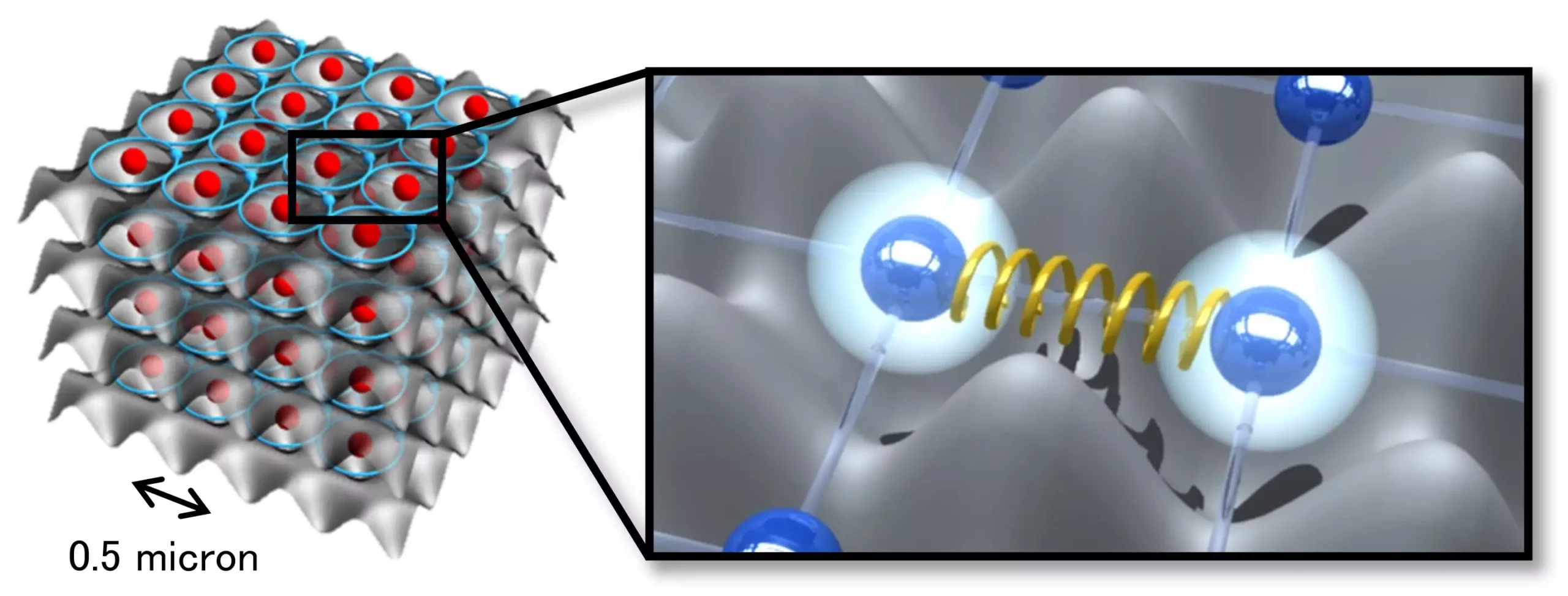Quantum mechanics has long equipped scientists with a toolkit to explore the subatomic world, opening doors to revolutionary technological applications such as quantum computing and sensing. Among the phenomena that harness the peculiarities of quantum systems, quantum entanglement stands out due to its critical role in interconnecting particles across vast distances. Rydberg atoms, characterized by their exceptionally large electronic orbitals, play a crucial role in the exploration of these phenomena. Recent research emanating from the Institute for Molecular Science has cast new light on the use of Rydberg atoms in quantum simulators, where electronic and motional states exhibit quantum entanglement—a development with potential implications for next-generation quantum technologies.
Published on August 30 in *Physical Review Letters*, the new study delves into the complex interplay between electronic states and atomic motion through the lens of an ultrafast quantum simulator. The researchers focused on exploiting the repulsive forces among Rydberg atoms—forces that arise when atoms are excited to these already energetic states. This approach marks a significant departure from previous conventional methods tied to fixed Rydberg distances, which limited researchers’ ability to explore quantum interactions beyond a certain threshold.
Through precise laser-cooling techniques, the research team successfully cooled an impressive 300,000 rubidium atoms to a temperature of 100 nanokelvin. These particles were gradually assembled into an optical trap that produced an optical lattice with a spacing of 0.5 microns. Utilizing ultrashort pulse laser light lasting only 10 picoseconds, the researchers induced a quantum superposition of a ground state with an electron residing in the 5s orbital and a Rydberg state with an electron in a giant 29s orbital.
A central innovation of this study is the researchers’ ability to overcome the limitations imposed by Rydberg blockade—a phenomenon restricting excitation due to the strong interaction of Rydberg atoms. By deploying ultrafast pulse lasers, they successfully induced quantum entanglement between both electronic states and motional states within just a few nanoseconds. This groundbreaking achievement is underpinned by the strong repulsive forces prominent in Rydberg states, generating correlations between an atom’s energy state and motion.
The crux of this phenomenon lies in the exceptional handling of particle distances within the optical lattice. By maintaining the atoms at 0.5 microns apart, the researchers tapped into the atomic wavefunction spread of merely 60 nanometers, enabling the observation of entangled states that previous studies could not reveal. This delicate manipulation demonstrates the potential of Rydberg atoms as significant players in the future of quantum simulation.
The implications of the study extend beyond merely showcasing entangled states; they launch the possibility of conceptualizing novel quantum simulation methods incorporating repulsive forces. By harnessing the quick excitations of Rydberg states, researchers can introduce arbitrary control over particle interactions, expanding the scope and precision of quantum simulations. This provides an essential avenue for simulating complex quantum materials, including those where the forces between electrons play a pivotal role.
The researchers propose leveraging this newly developed methodology to not only understand existing quantum phenomena but also to forge pathways toward real-world applications. For example, simulating the behaviors of electrons in various materials through controlled interactions may unlock further developments in quantum computing and sensing.
The study’s findings resonate deeply with the ongoing effort to enhance quantum computing capabilities. The same research group is actively involved in developing an ultrafast cold-atom quantum computer that significantly accelerates two-qubit gate operations, propelling them two orders of magnitude beyond traditional cold-atom quantum processors. By employing Rydberg states during operations, researchers aim to mitigate the factors that typically compromise fidelity, such as atomic motion amid interactions.
As this research progresses, the key to achieving efficient and reliable two-qubit gates lies in the understanding generated by this latest study. More accurate manipulation of quantum entanglement could lead to the successful realization of socially beneficial quantum computers capable of solving complex problems that conventional systems cannot address.
The exploration into the intersection of Rydberg states, quantum entanglement, and advanced quantum simulation methods represents a promising leap in quantum technology. By unveiling the mechanisms of interaction at play and proposing innovative methodologies, the research underscores the importance of Rydberg atoms in our quest for next-generation quantum technologies. As researchers continue to expand on this foundational work, the prospective applications in quantum computing and beyond look increasingly compelling, holding the potential to redefine our technological landscape.

